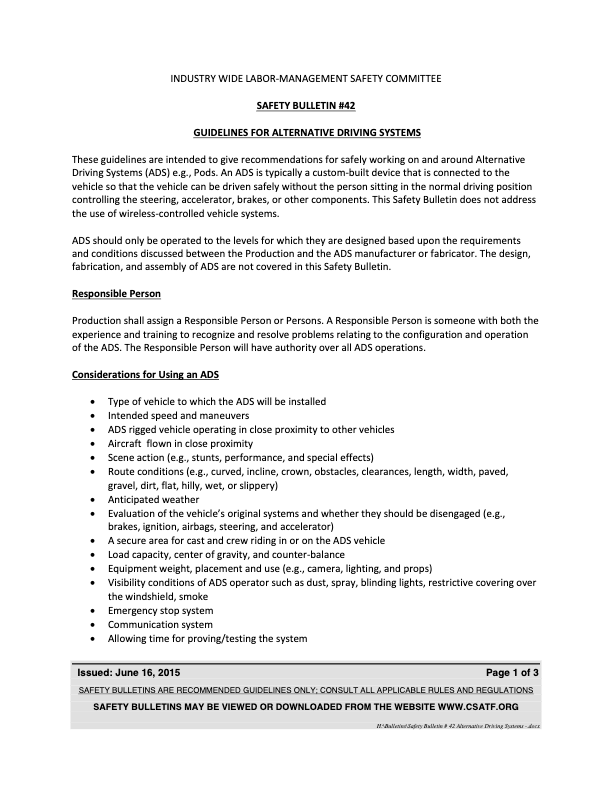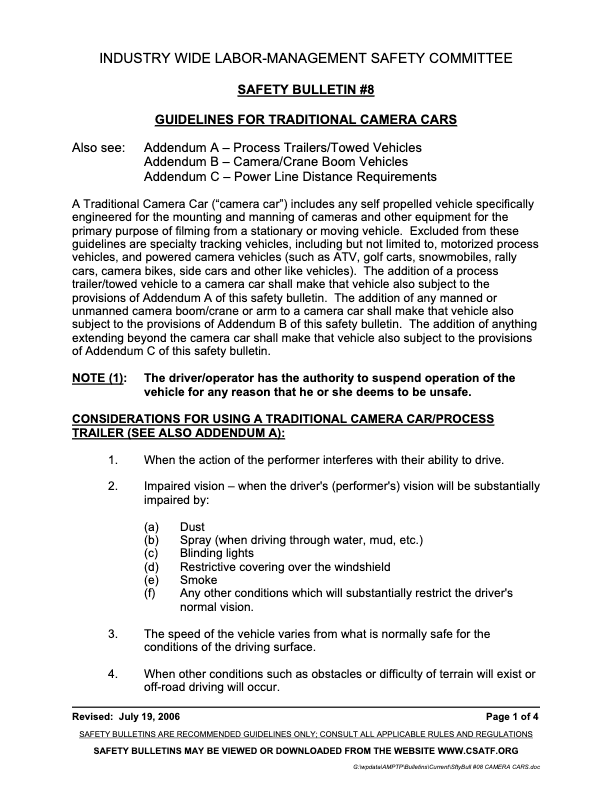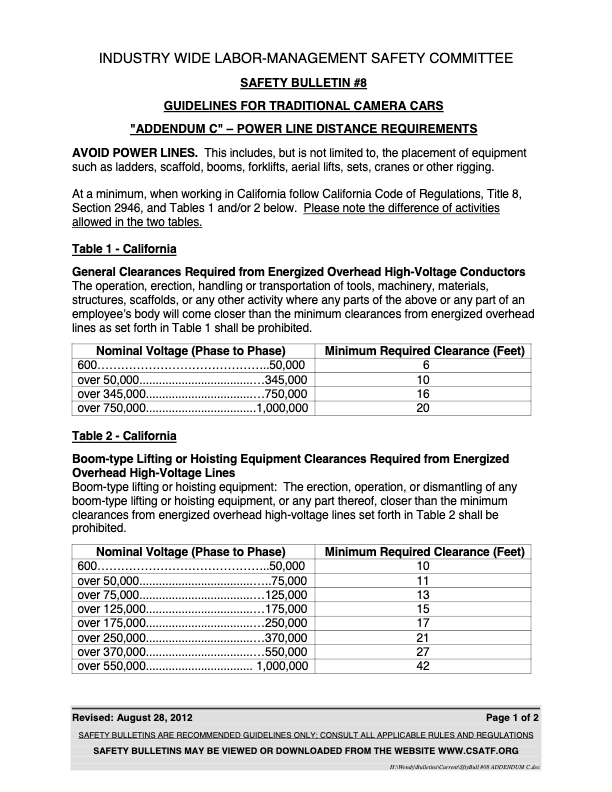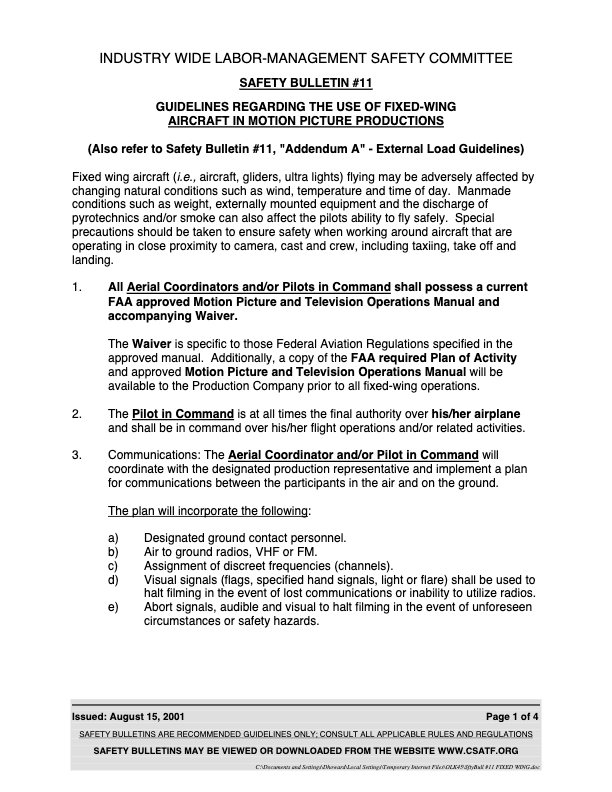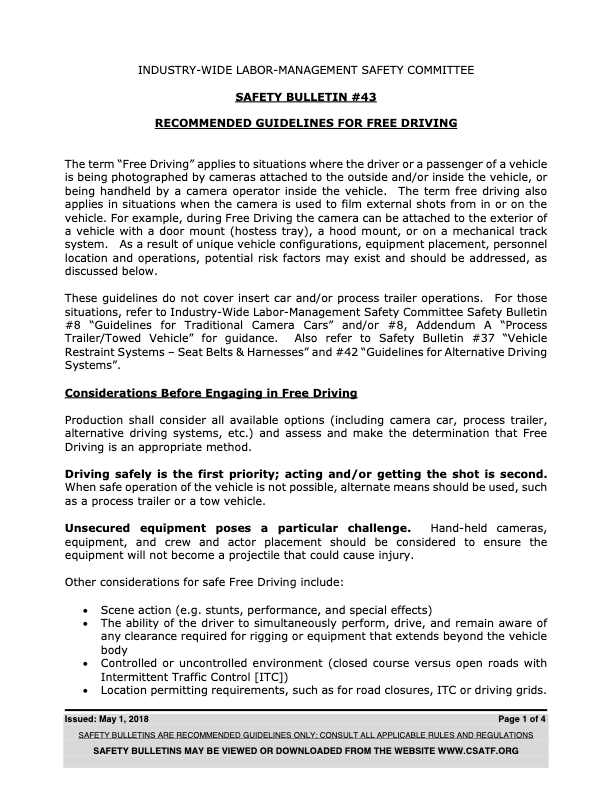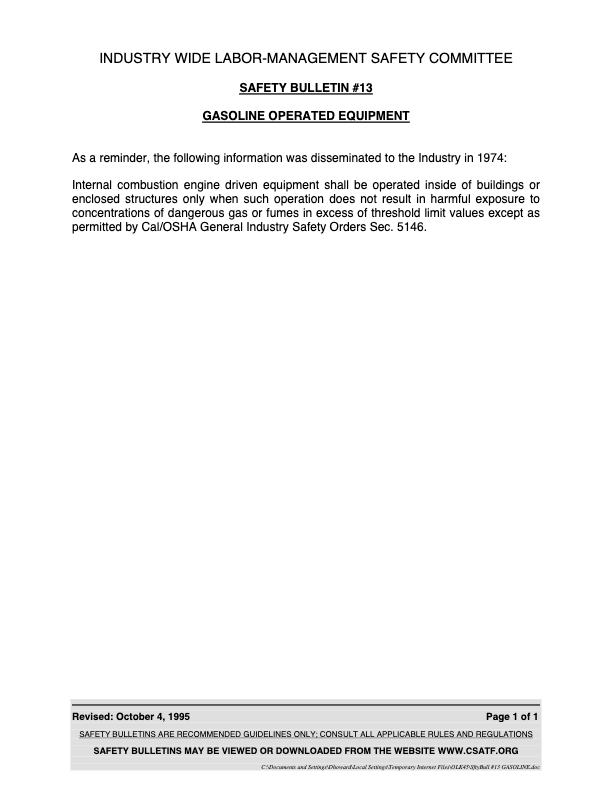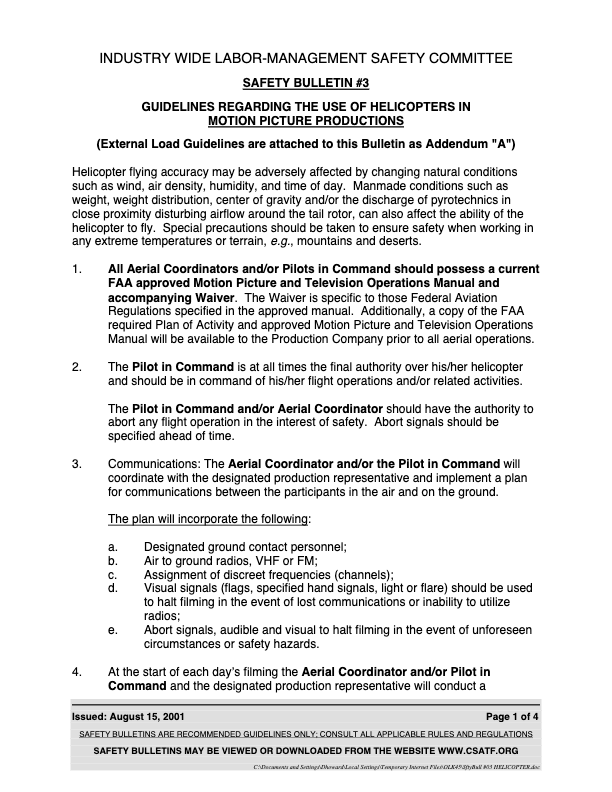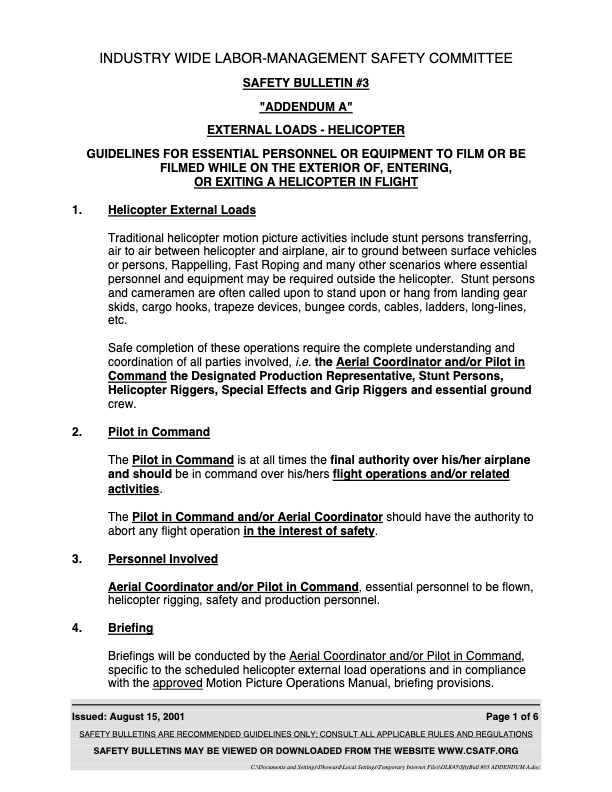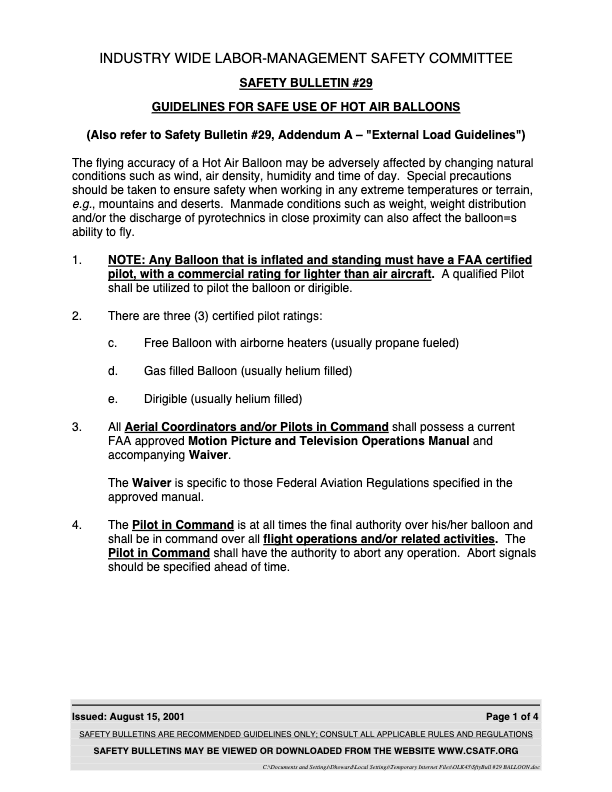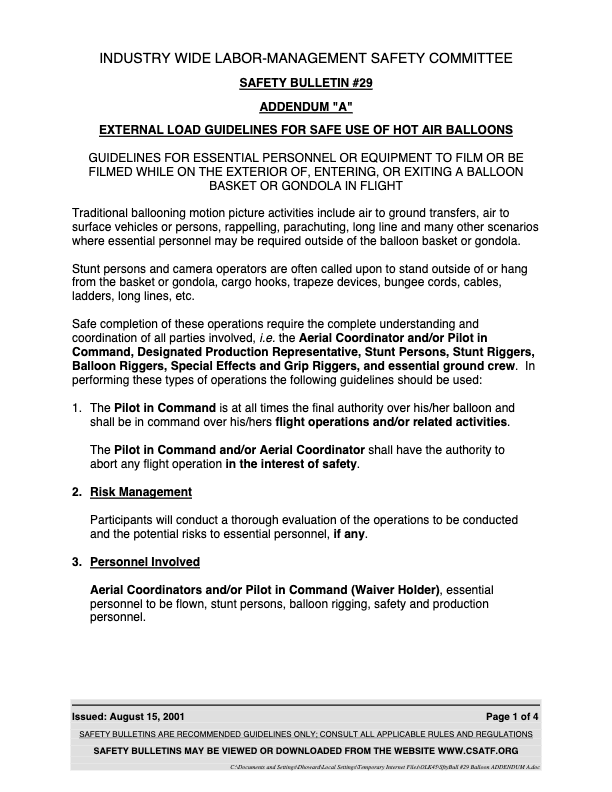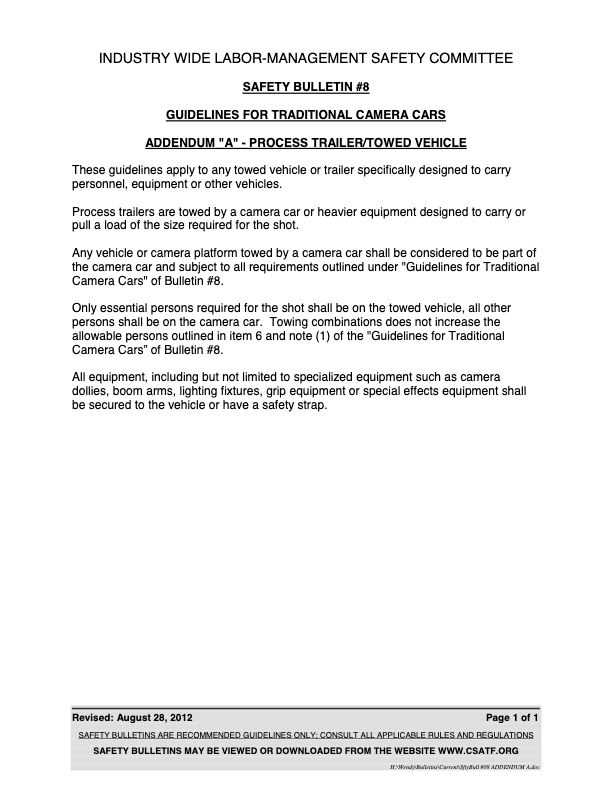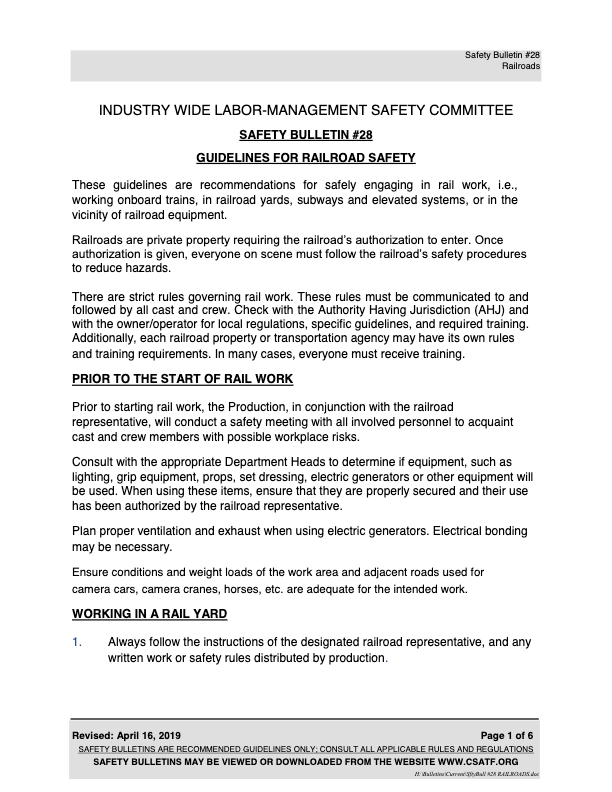Safety Bulletin
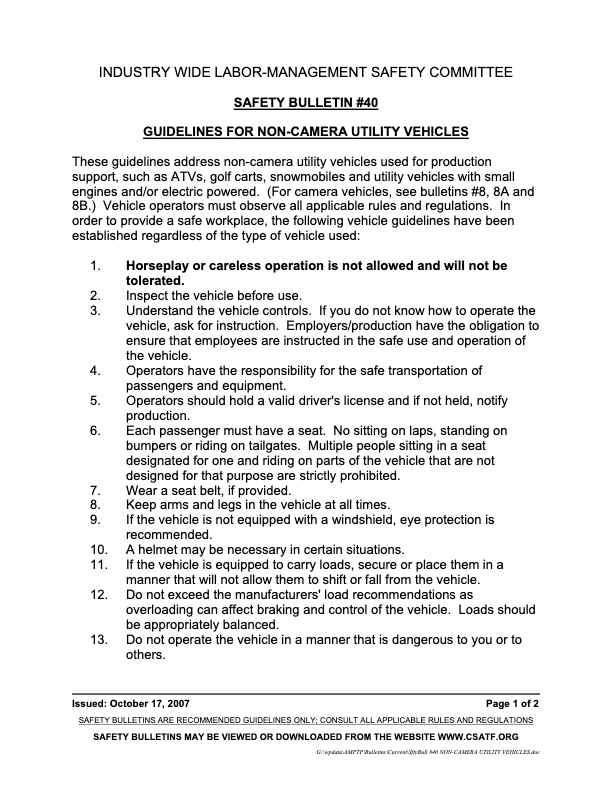
Guidelines
These guidelines address non-camera utility vehicles used for production support, such as ATVs, golf carts, snowmobiles and utility vehicles with small engines and/or electric powered. Vehicle operators must observe all applicable rules and regulations. In order to provide a safe workplace, the following vehicle guidelines have been established regardless of the type of vehicle used:
- Horseplay or careless operation is not allowed and will not be tolerated.
- Inspect the vehicle before use.
- Understand the vehicle controls. If you do not know how to operate the vehicle, ask for instruction. Employers/production have the obligation to ensure that employees are instructed in the safe use and operation of the vehicle.
- Operators have the responsibility for the safe transportation of passengers and equipment.
- Operators should hold a valid driver’s license and if not held, notify production.
- Each passenger must have a seat. No sitting on laps, standing on bumpers or riding on tailgates. Multiple people sitting in a seat designated for one and riding on parts of the vehicle that are not designed for that purpose are strictly prohibited.
- Wear a seat belt, if provided.
- Keep arms and legs in the vehicle at all times.
- If the vehicle is not equipped with a windshield, eye protection is recommended.
- A helmet may be necessary in certain situations.
- If the vehicle is equipped to carry loads, secure or place them in a manner that will not allow them to shift or fall from the vehicle.
- Do not exceed the manufacturers’ load recommendations as overloading can affect braking and control of the vehicle. Loads should be appropriately balanced.
- Do not operate the vehicle in a manner that is dangerous to you or to others.
- Always use caution around people and animals. Pedestrians always have the right of way.
- Exercise caution going around corners. Look for hazards, such as other vehicles and people.
- Be familiar with the terrain.
- To reduce the risk of rollovers, avoid driving off curbs, from one level to another, and/or turning on inclines.
- Drive at speeds appropriate to the surface, road and weather conditions (e.g., driving in dirt or gravel, on a steep incline, on ice, in rain, etc.).
- In poor visibility, vehicles should not be operated unless equipped with headlights or sufficient lighting is provided.
- Towing should only be performed in a manner specified by the manufacturer.
Using and working safely around non-camera utility vehicles requires the full attention and care of the entire crew. Horseplay and excessive speed are the primary causes of accidents and injuries. Extreme caution should be used when operating these vehicles.
Operators are responsible to follow these safety guidelines, employer guidelines and manufacturer operating manuals for the safe operation of these types of vehicles.

